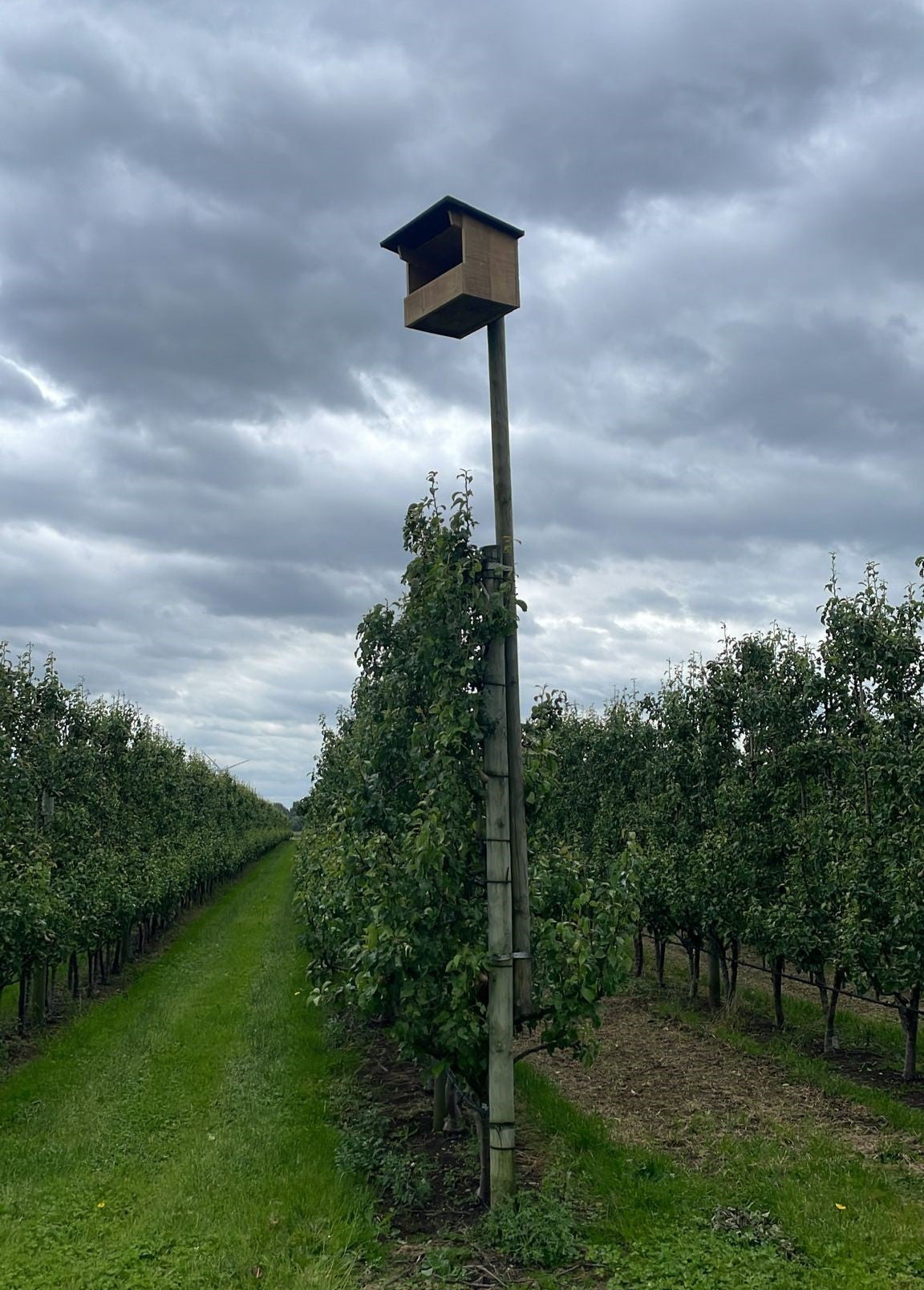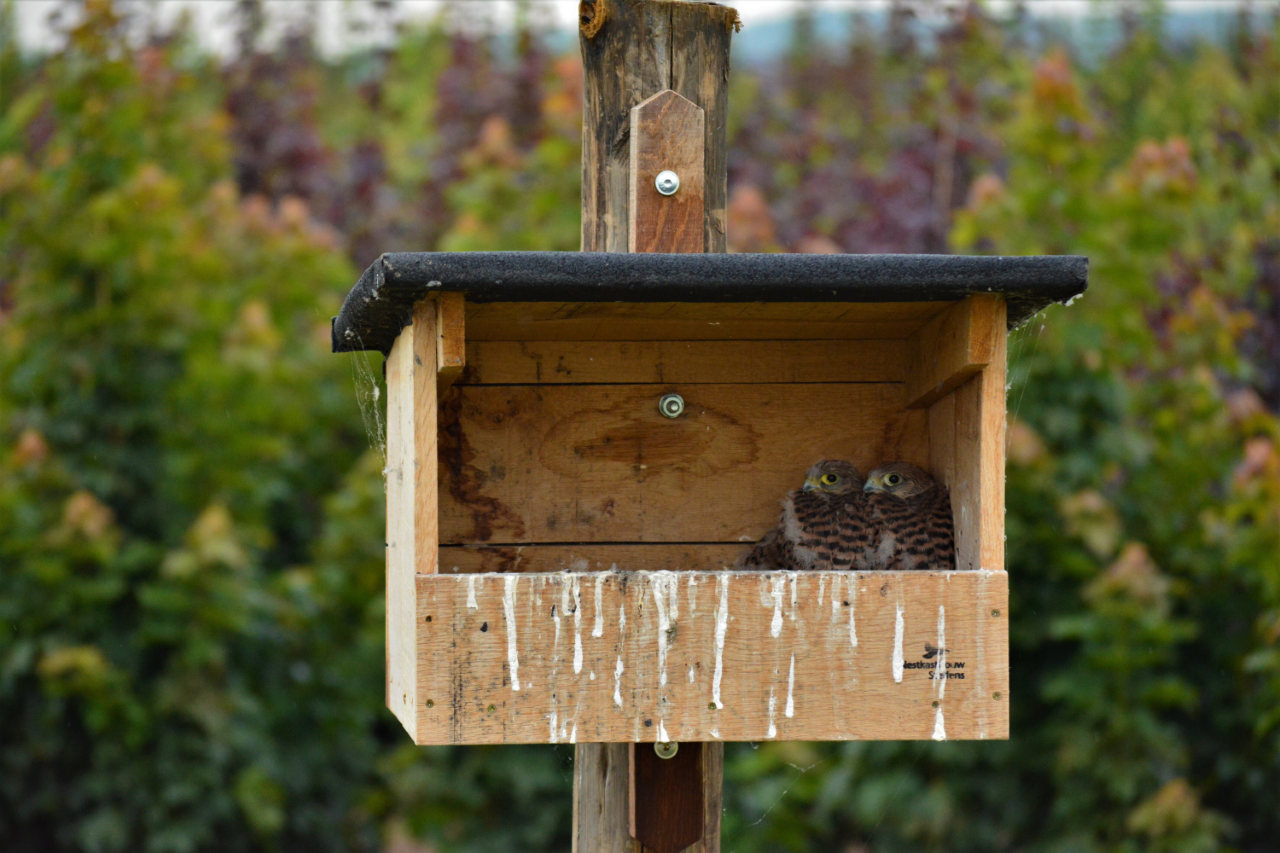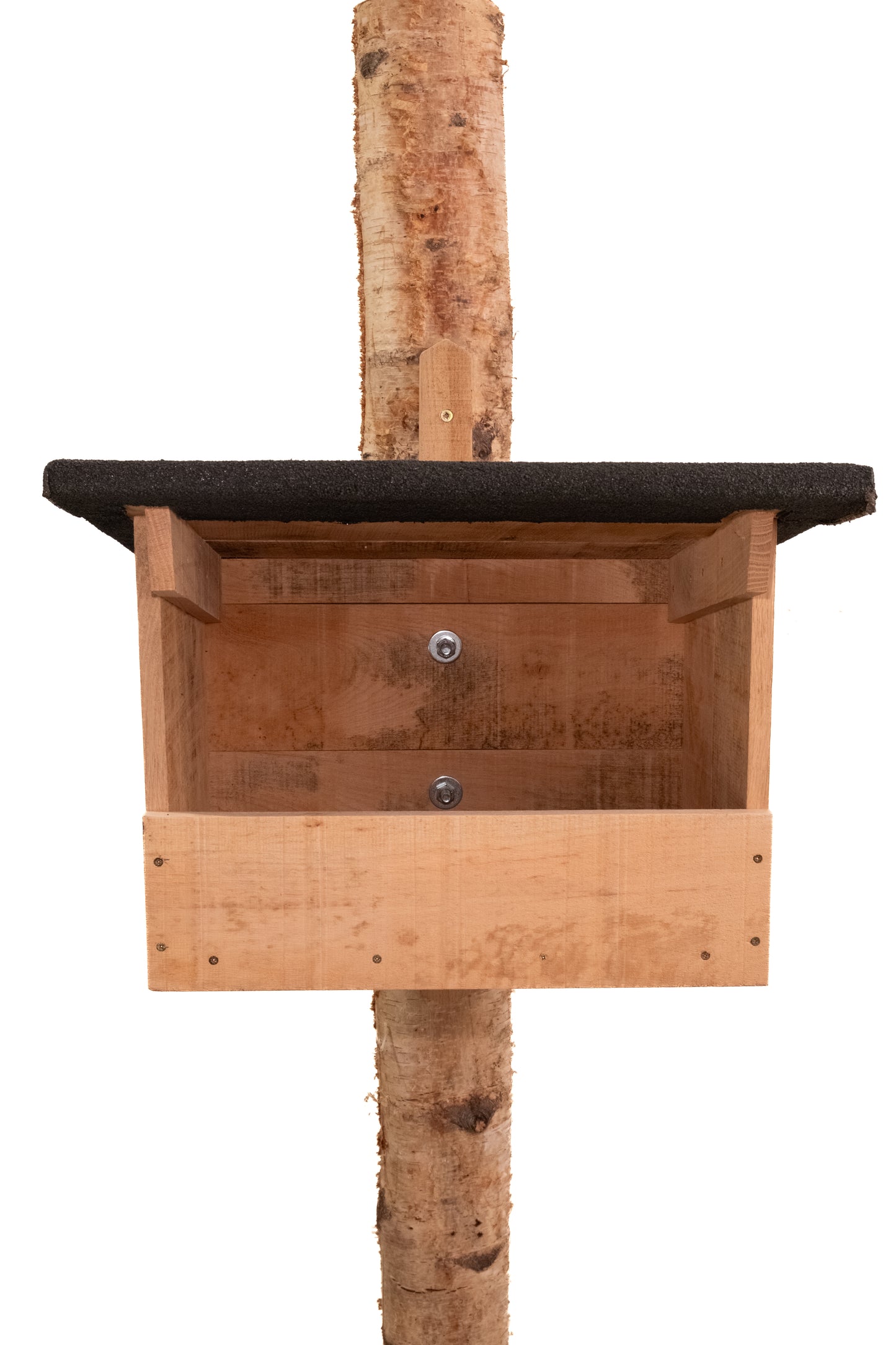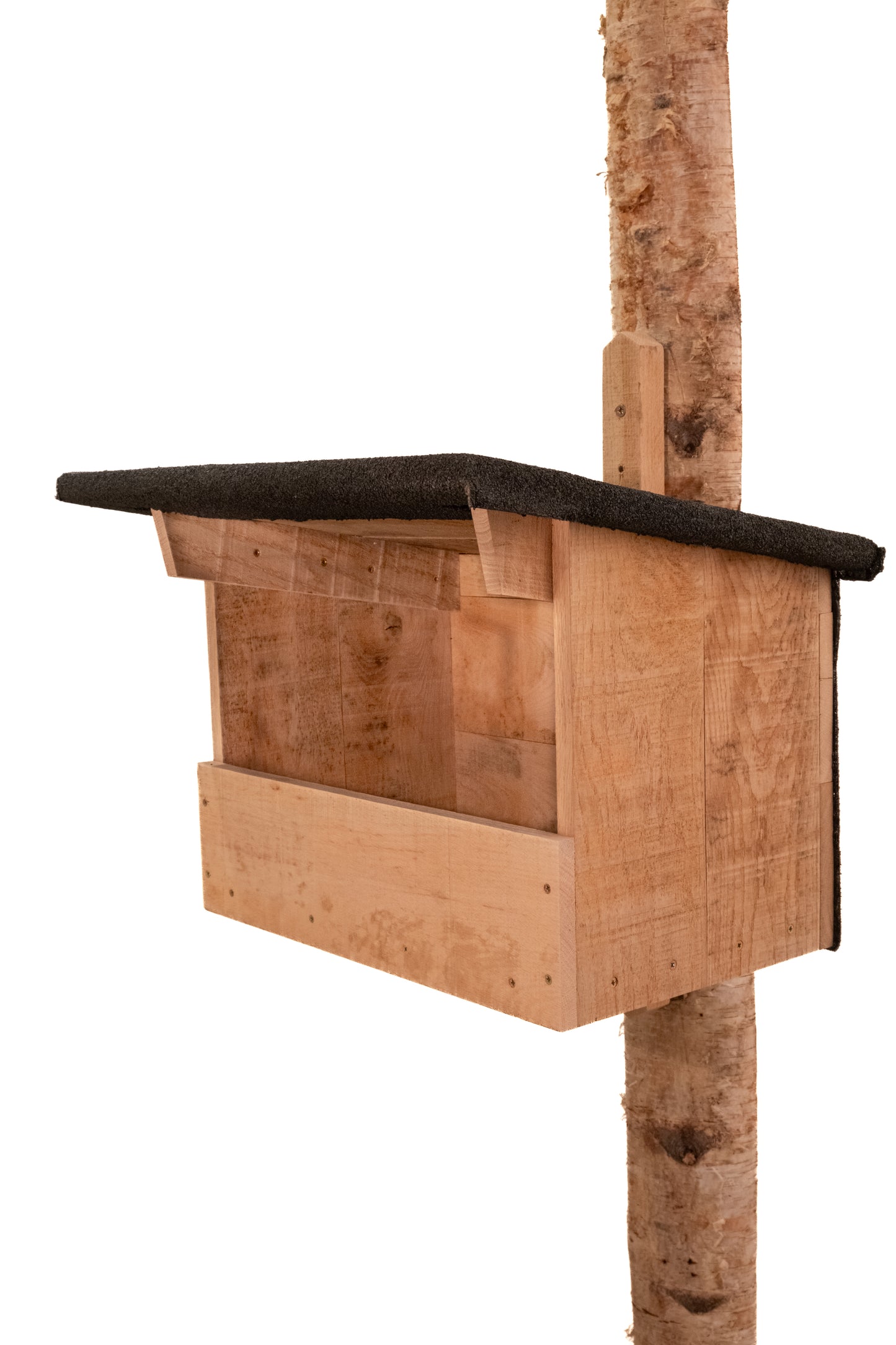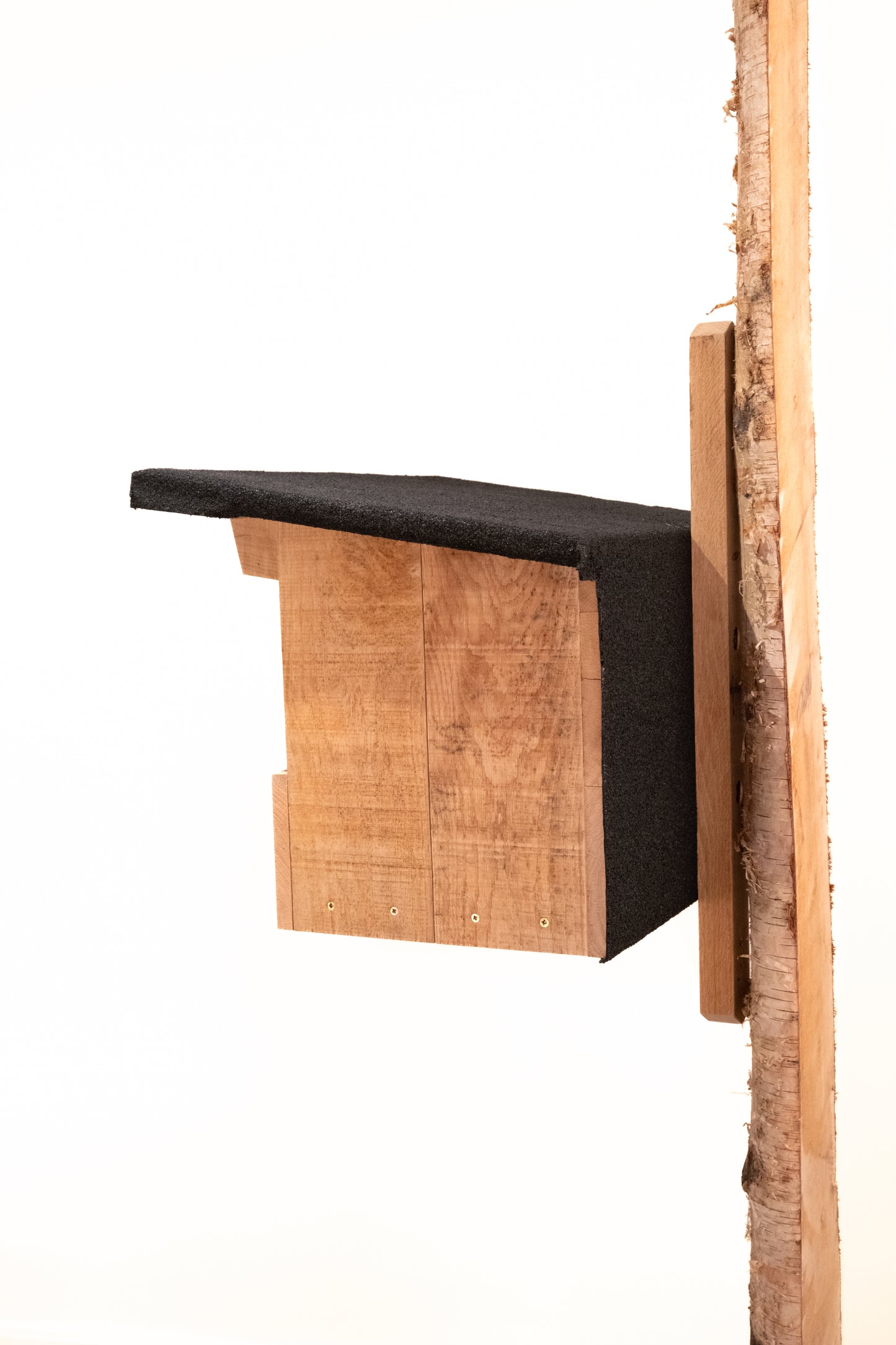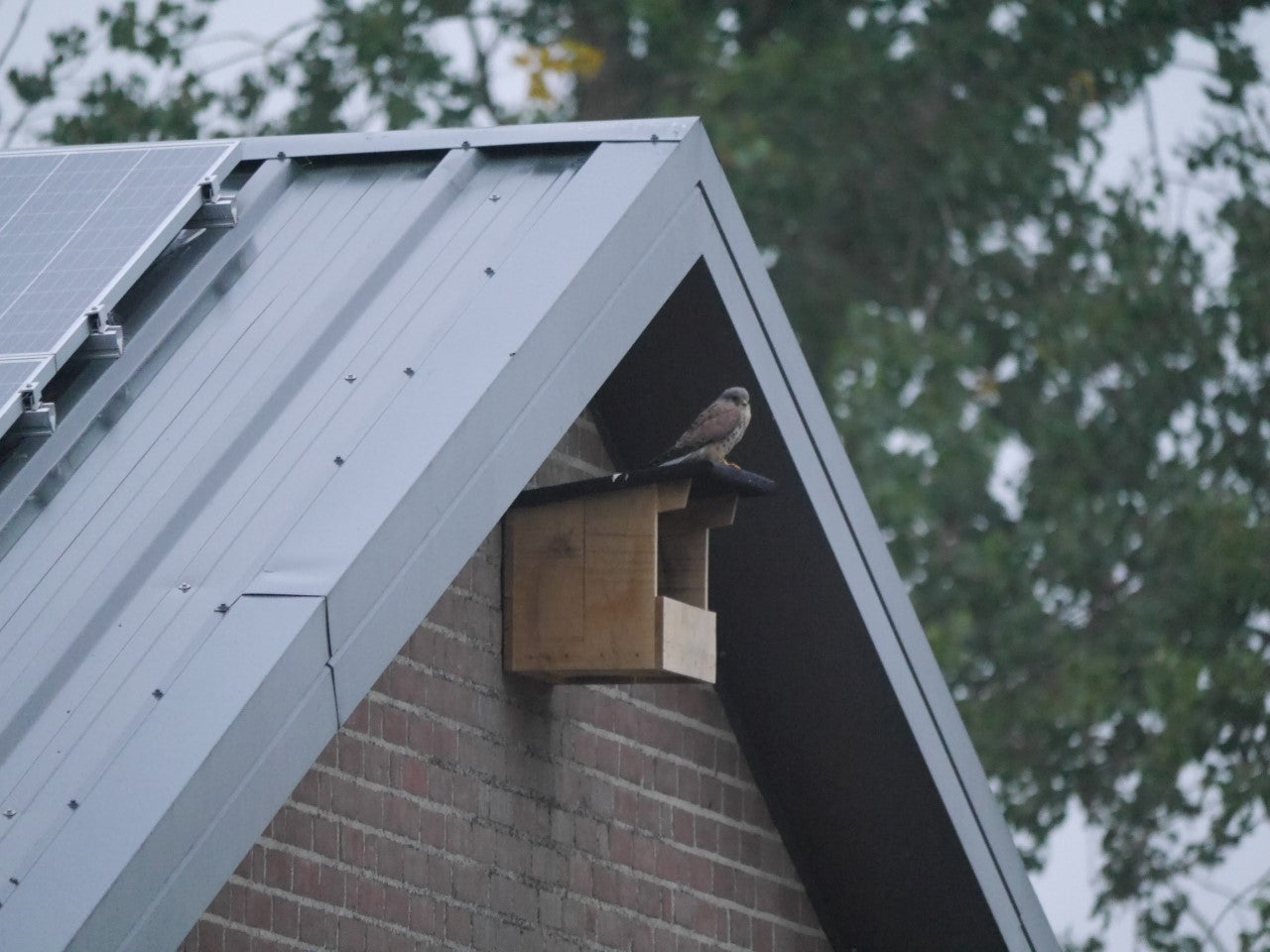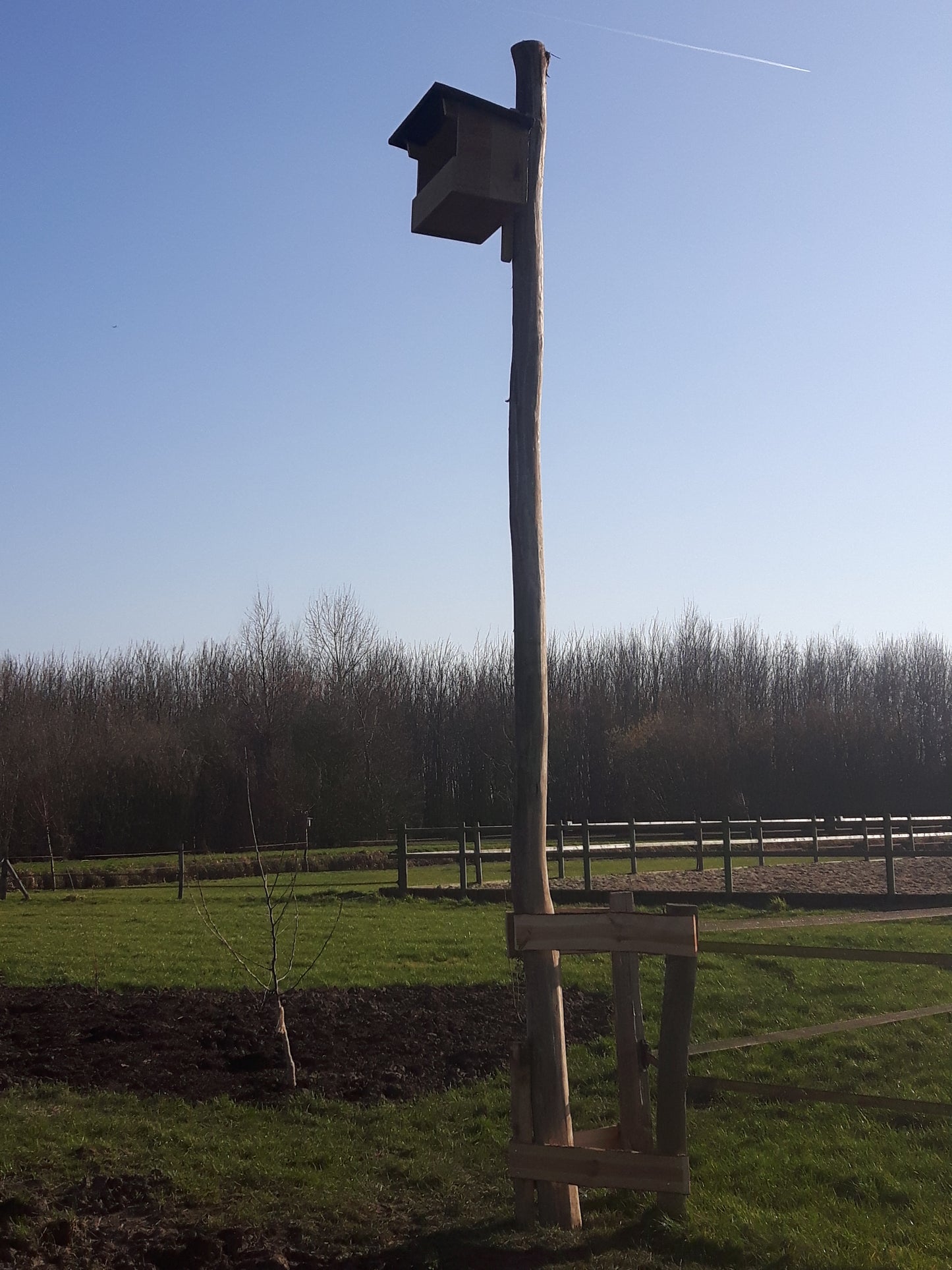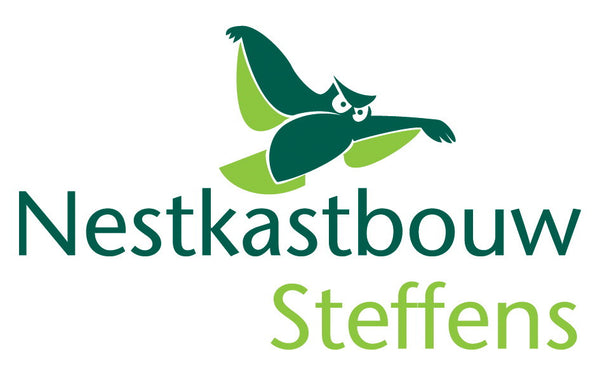Kestrel
Kestrel
The kestrel stands out because of its distinctive way of foraging in the field or along roads. However, this praying falcon is seen less and less and is largely dependent on nest boxes and the food situation in its territory. Bird Protection has therefore declared 2025 as the 'Year of the Kestrel'.
Our nest boxes for the kestrel are made of oak, are very solid partly because the roof and the entire back panel are finished with roofing felt. Such boxes often hang in the weather and wind in the open field or along forest edges. This means that rain, wind and storm have a lot of influence on the box. The supplied mounting material to attach the box to the pole, tree or facade is also very solid. A sound box is a prerequisite for many years of breeding success.
About the falcon
About the falcon
The kestrel (Falco tinnunculus) measures approximately 31 to 37 cm in length. The number of breeding pairs in the Netherlands is estimated at 7,500. The characteristics of the kestrel are: back reddish brown, wings brownish black. Long dark sideburns. Underside clay-coloured with brown longitudinal stripes, legs yellow. In the female, the top of the head, neck, sideburns and rump are blue-grey, as is the tail, which has a broad black band at the end. Kestrels 'pray', which means that they 'hang' in the air in one place and search for prey from there. The habitat of the kestrel is an open area with no or low vegetation, for example fields, meadows or fallow land. The food consists mainly of field mice. In the absence of these, they also hunt moles, shrews and sometimes small birds (emergency food). Kestrels make grateful use of nest boxes that are usually attached to or on poles and are often placed in the open field. 2025 has been declared the year of the Kestrel.
Material and maintenance
Material and maintenance
Wood type: solid oak (16mm).
Lifespan: approx. 10 years when the box hangs in the open field. If the box hangs on a facade in the ridge under a roof overhang, the lifespan is longer.
Weight: approx. 14 kg.
Dimensions: length 57 cm, height 43 cm, depth 32 cm.
Roof: finished with high-quality bitumen roofing felt, which guarantees a longer lifespan.
Maintenance: in principle the cabinet does not need any maintenance and therefore does not need to be painted or stained. In fact, the cabinet only becomes more beautiful over time because the wood turns grey and blends in with nature.
Inspection box: kestrels breed from the beginning of April. When breeding in the box, it is clearly visible from a great distance, because the box is flown to by the parent birds all day long. Inspection is allowed from mid-May. It is wise not to go near the box when you can see the young from the ground. This is because there is a big chance that the young will leave the box prematurely while they are not yet able to fly. They then easily fall prey to predators on the ground. A
annual inspection at the end of the season is recommended, especially when there is a lot of nesting material and possibly old eggs in the box. It is then important to remove these.
To hang
To hang
Hanging: When purchasing a kestrel box, coordination is necessary. This is to determine
how the cabinet is going to be hung, so that we can supply the correct hanging material and adjust the cabinet accordingly. If you would like us to install the cabinet, we would be happy to do so. We can also realise a custom solution for you if required. For more information, please contact us.
Nesting material: do not put nesting material in the box. The pellets of the kestrel form a nice base to lay the eggs in.
Hanging location: this can be done in three ways (always with the opening facing South-East):
- On a pole that is placed in the field. This can be a wooden pole or iron. It is important that the box is firmly attached to the pole and that the pole
is sufficiently firmly in the ground. Also a light pole (for example at a
riding arena) is a great place. Kestrels are not really shy and quickly get to know the inhabitants of the yard and can live together well with them.
- On the facade of a stable or house. This should be a quiet facade with a view over the meadows.
- On a solitary tree, a tree on the edge of a forest or wooded area is also a great place to hang the box. Preferably with a free view over the meadows.
Other residents: Nile goose (rarely seen). If you live in an area rich in geese, we can place an extra slat so that the Nile goose cannot fly into the box.
Contact voor advies en prijs
Contact voor advies en prijs
It is advisable to contact us so that we can guide you to the right box and the right hanging location. We can look with you and give sound advice using Google maps. We also have the necessary map material of owls in your area.
De nestkast wordt verzonden inclusief bevestigingsmateriaal, zodat u hem eenvoudig zelf kunt ophangen.
Share
